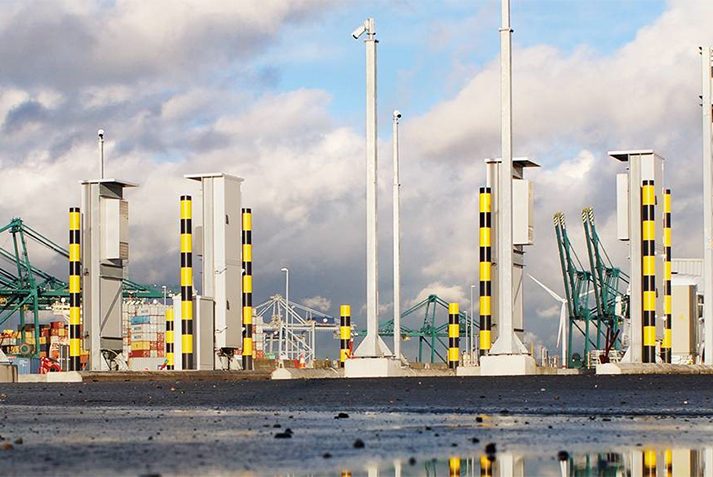The National Nuclear Security Administration (NNSA)’s Nevada National Security Site (NNSS) will present advancements in radiological detection to the International Atomic Energy Agency (IAEA) virtually Oct. 19 to 30. The event, called the International Conference on the Management of Naturally Occurring Radioactive Material (NORM) in Industry, is the first conference dedicated to NORM organized by the IAEA.
NORM is naturally present everywhere in the form of radioactive materials, such as potassium, uranium, thorium and their decay products, which exist in the Earth’s crust. When NORM is extracted or concentrated through various industrial processes – for example, mining, water treatment and fertilizer manufacturing – it is referred to as Technologically Enhanced Naturally Occurring Radioactive Materials (TENORM). TENORM may create elevated radiation exposure to people and the environment. Some TENORM also has similar gamma energy spectral fingerprints to other nuclear material. This presents a unique challenge in the transportation industry to ensure that other nuclear materials are not masked as TENORM.
“It can be tricky that large amounts of this material can cause confusion or false alarms with respect to source detection and identification,” said Senior Principal Scientist Sanjoy Mukhopadhyay, who works with the NNSS Nuclear Response Division’s Remote Sensing Laboratory at Joint Base Andrews in Maryland and will present to the IAEA. “TENORM needs to be strictly monitored and controlled internationally with uniform standards. It’s critical that we distinguish this unique fingerprint in the gamma energy spectrum.”
As part of its nuclear nonproliferation and security missions, the NNSA has supported the development of a network of more than 4,000 Radiation Portal Monitors (RPMs) worldwide to monitor checkpoints at land-, sea- and airports and along railway systems to prevent and detect trafficking of radiological materials. In order to keep international borders safe, the NNSS and its National Laboratory partners are working to develop screening technologies to further detect nuclear and radiological material as well as isolate TENORM readings from illicit material and thereby avoid false alarms.
The Department of Energy (DOE) and NNSA have a response assistance network system in place if unknown materials are encountered, the detected gamma energy fingerprint is suspicious or other precautionary measures are needed. Once a nation requests assistance to the NNSA Emergency Operations Center, the DOE/NNSA triage international assistance system activates with on-call scientists made available to analyze the data and determine a course of action.
Scientists use multiple methods of gamma spectroscopy analysis to identify radioactive isotopes and account for anomalies that would trigger RPM alarms.
“Instead of looking at all the spectral channels, you divide the spectral channels into smaller regions of interests,” said Mukhopadhyay. “By doing that, you have reduced the dimensionality of the problem. You only look into gamma energy channels you are suspecting to find something. When you look into places where there is a threat, you make distinctions between the threat object and what is naturally occurring.”
Advancements in this technology will be shared with stakeholders during this month’s international conference, which will serve as an opportunity for the NNSS to share its role in working to address the challenges posed by TENORM for international security. The presentation is on behalf of the NNSA Office of Nuclear Incident Policy and Cooperation, which provides international support for radiological emergency preparedness and response worldwide with more than 80 partner nations.
“We get to elaborate on what the NNSS does for the international community in order to resolve some of these situations,” said Mukhopadhyay. “The NNSS works hard to train foreign countries on how to collect and provide gamma energy spectra along with other corroborating data to the DOE/NNSA triage system for unambiguous and timely resolution of the problem.”

